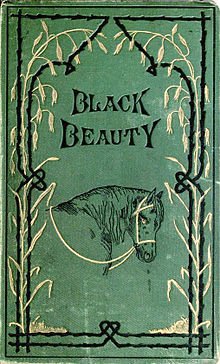On November 24th, 1877, a groundbreaking novel was published that would forever change the way people thought about the treatment of animals. Anna Sewell’s book, “Black Beauty: His Grooms and Companions, the Autobiography of a Horse,” shed light on the mistreatment of horses and became a catalyst for the animal welfare movement.
Anna Sewell, an English novelist, wrote “Black Beauty” with the intention of raising awareness about the harsh conditions that horses endured during the Victorian era. The novel is narrated from the perspective of the titular horse, Black Beauty, and provides a unique insight into the lives of working horses.
The book follows Black Beauty’s life, from his early days as a young colt to his experiences as a carriage horse and eventually his retirement in the countryside. Through Black Beauty’s narrative, Sewell addresses various issues such as the use of check-reins, the importance of proper grooming and nutrition, and the impact of different types of harnesses on a horse’s well-being.
“Black Beauty” was not only a fictional story but also a call to action. Sewell’s aim was to educate readers about the mistreatment of horses and encourage them to treat these animals with kindness and compassion. The novel highlighted the physical and emotional pain horses endured due to the ignorance and cruelty of their human handlers.
The impact of “Black Beauty” was immediate and far-reaching. It resonated with readers of all ages and backgrounds, sparking conversations about animal welfare and inspiring changes in legislation. The novel’s success can be attributed to its powerful storytelling, relatable characters, and Sewell’s ability to humanize horses in a way that had never been done before.
One of the key aspects that made “Black Beauty” so influential was its realistic portrayal of the horse’s perspective. Sewell’s extensive research and personal experiences with horses allowed her to accurately depict their thoughts, emotions, and physical sensations. This authenticity made the novel relatable and emotionally impactful.
Throughout the years, “Black Beauty” has remained a beloved classic and has been translated into numerous languages. Its enduring popularity can be attributed to its timeless message of compassion and empathy towards animals. The novel continues to be taught in schools and has inspired adaptations in various forms, including films, stage plays, and even a television series.
The publication of “Black Beauty” also had a lasting impact on the treatment of horses. It led to increased awareness and scrutiny of working conditions for carriage horses, resulting in improved regulations and standards. The novel’s success paved the way for further advancements in animal welfare, with Sewell’s work serving as a catalyst for change.
Anna Sewell’s “Black Beauty” remains a testament to the power of literature in driving social change. By giving a voice to the voiceless and shedding light on the mistreatment of horses, Sewell’s novel continues to inspire generations to advocate for the welfare of animals.
References:
- Britannica – Black Beauty
- Anna Sewell – Official Website
- National Geographic – Anna Sewell and the Legacy of Black Beauty
Excerpt:
On November 24th, 1877, Anna Sewell’s novel, “Black Beauty: His Grooms and Companions, the Autobiography of a Horse,” was published. This groundbreaking book, written from the perspective of a horse, aimed to expose the mistreatment of horses and had a significant impact on animal welfare.

